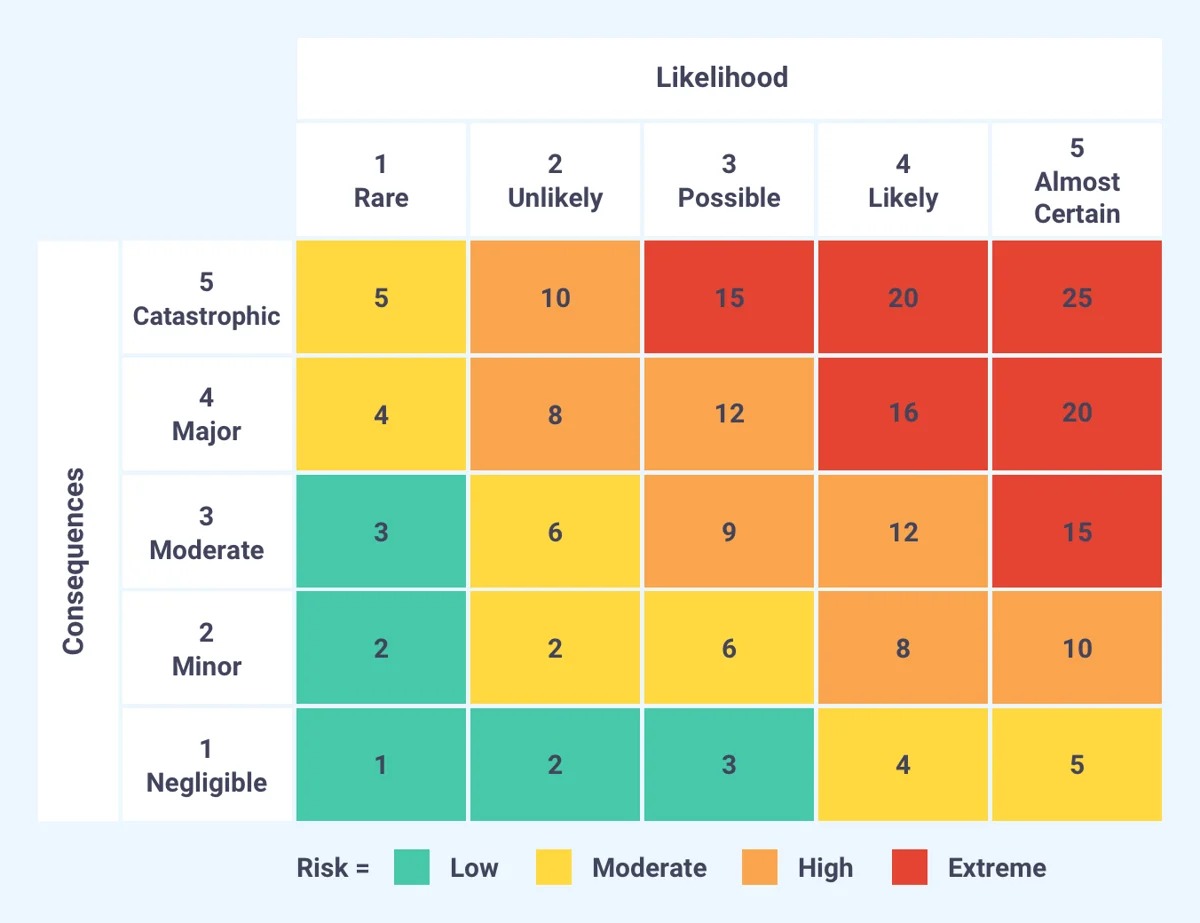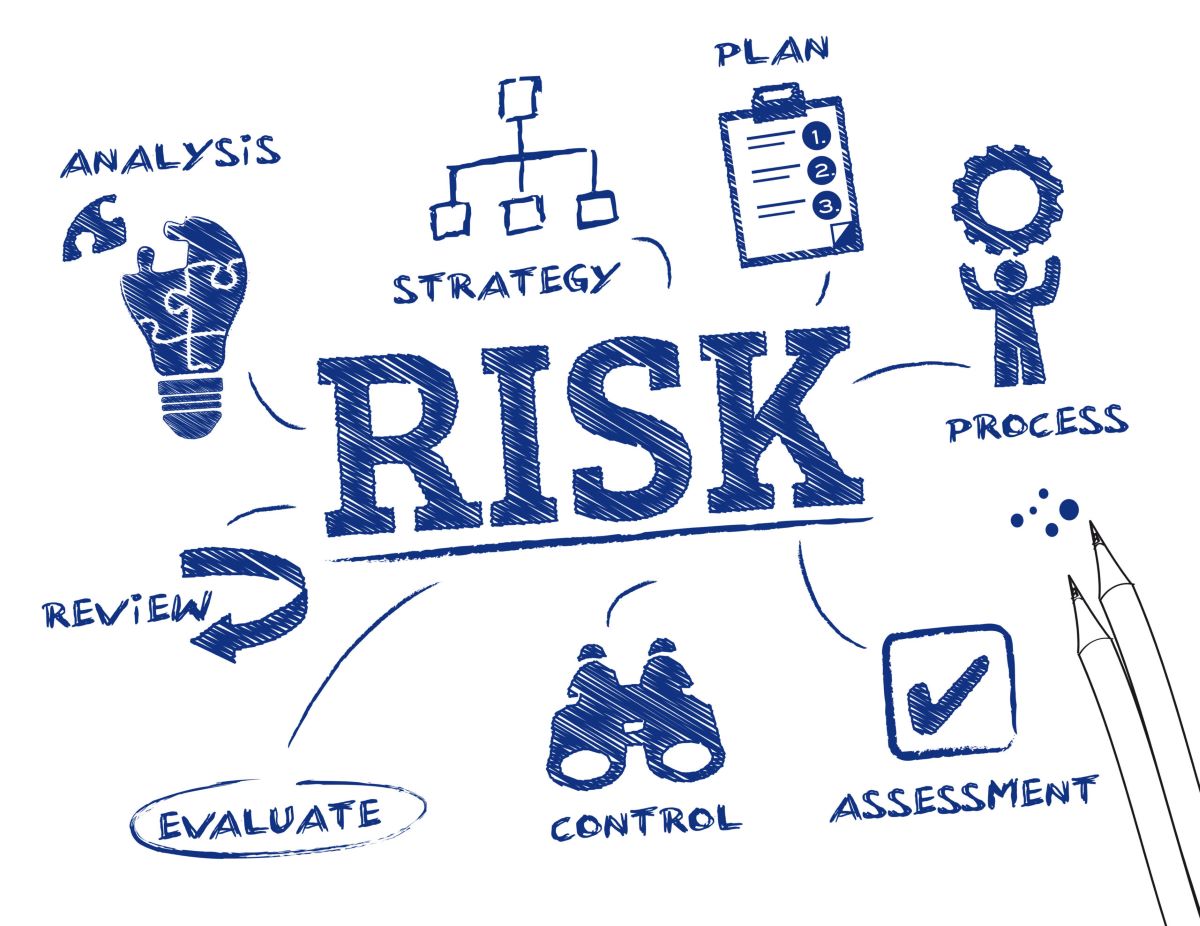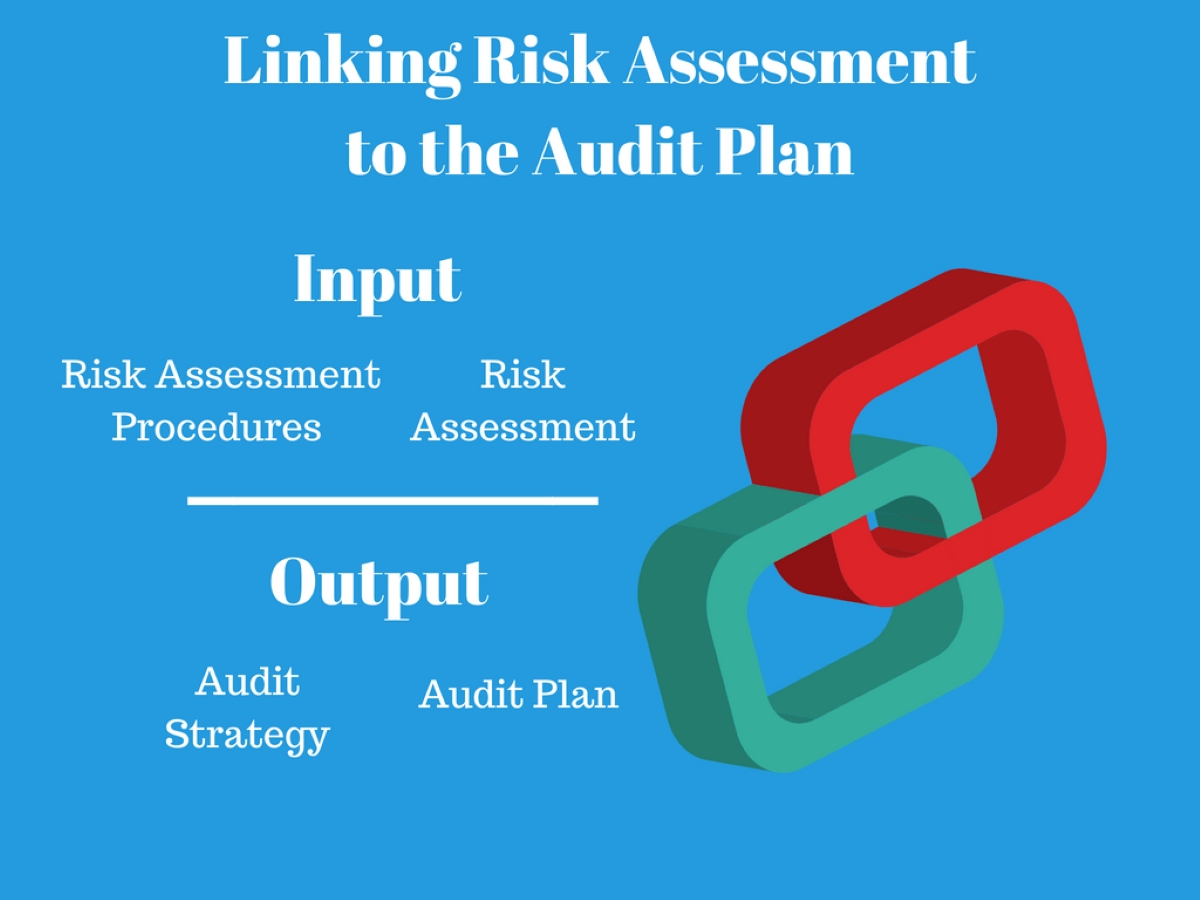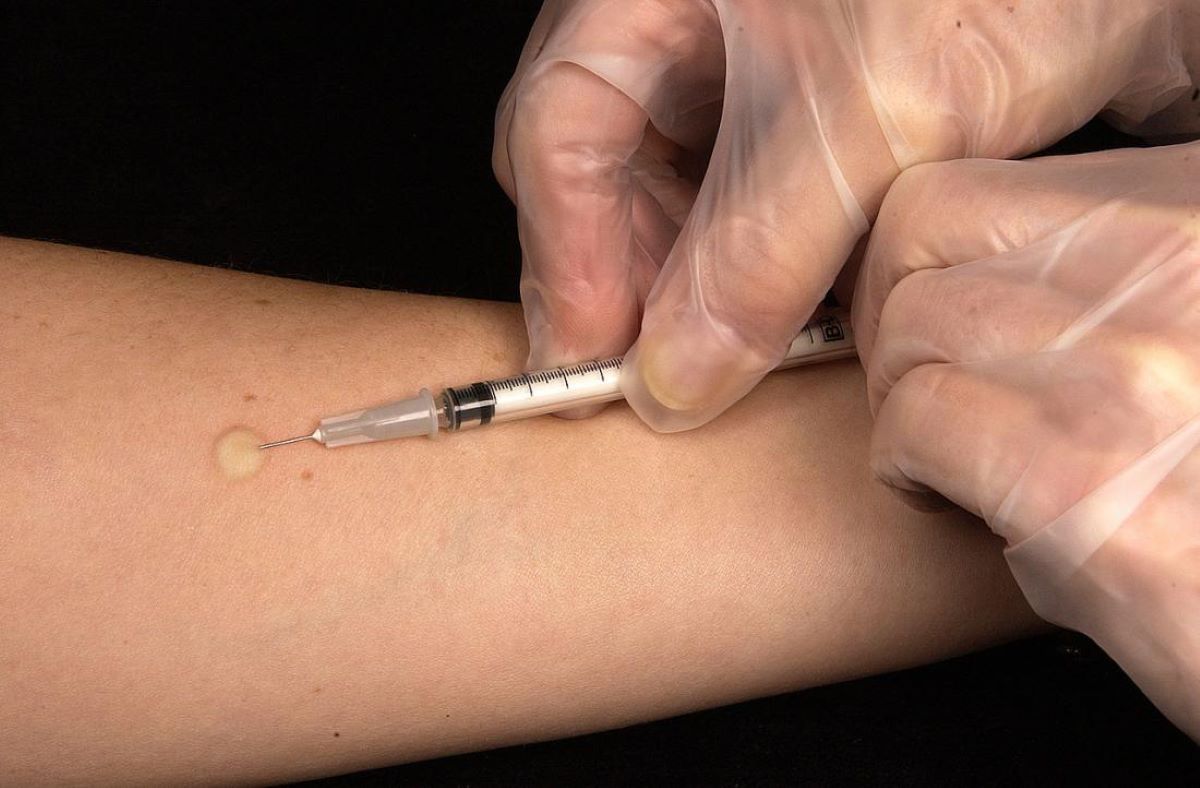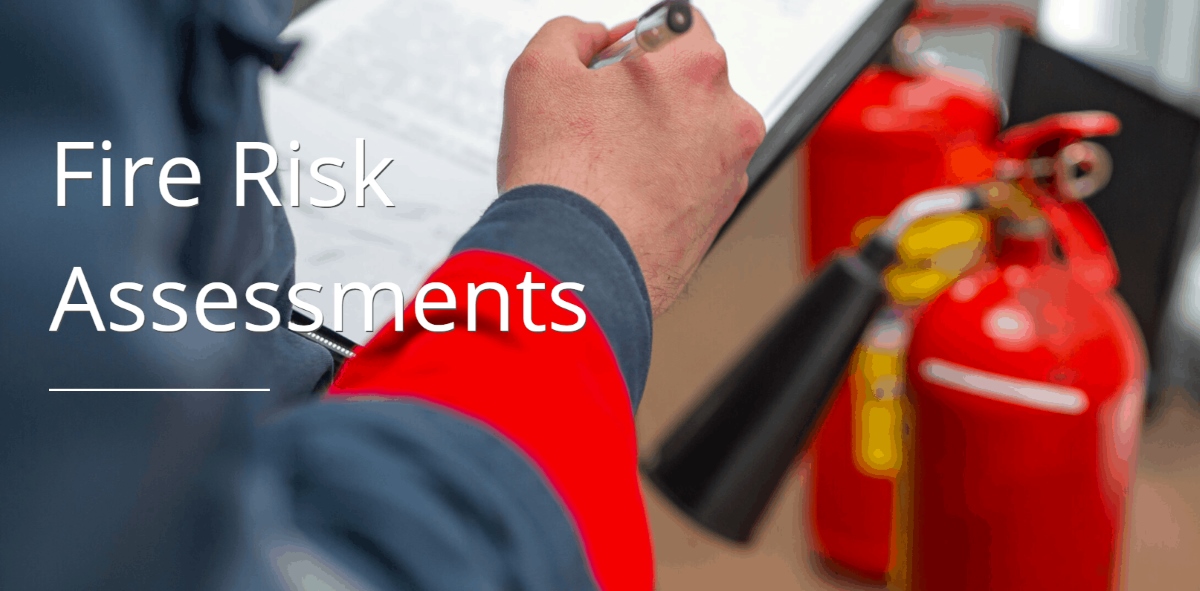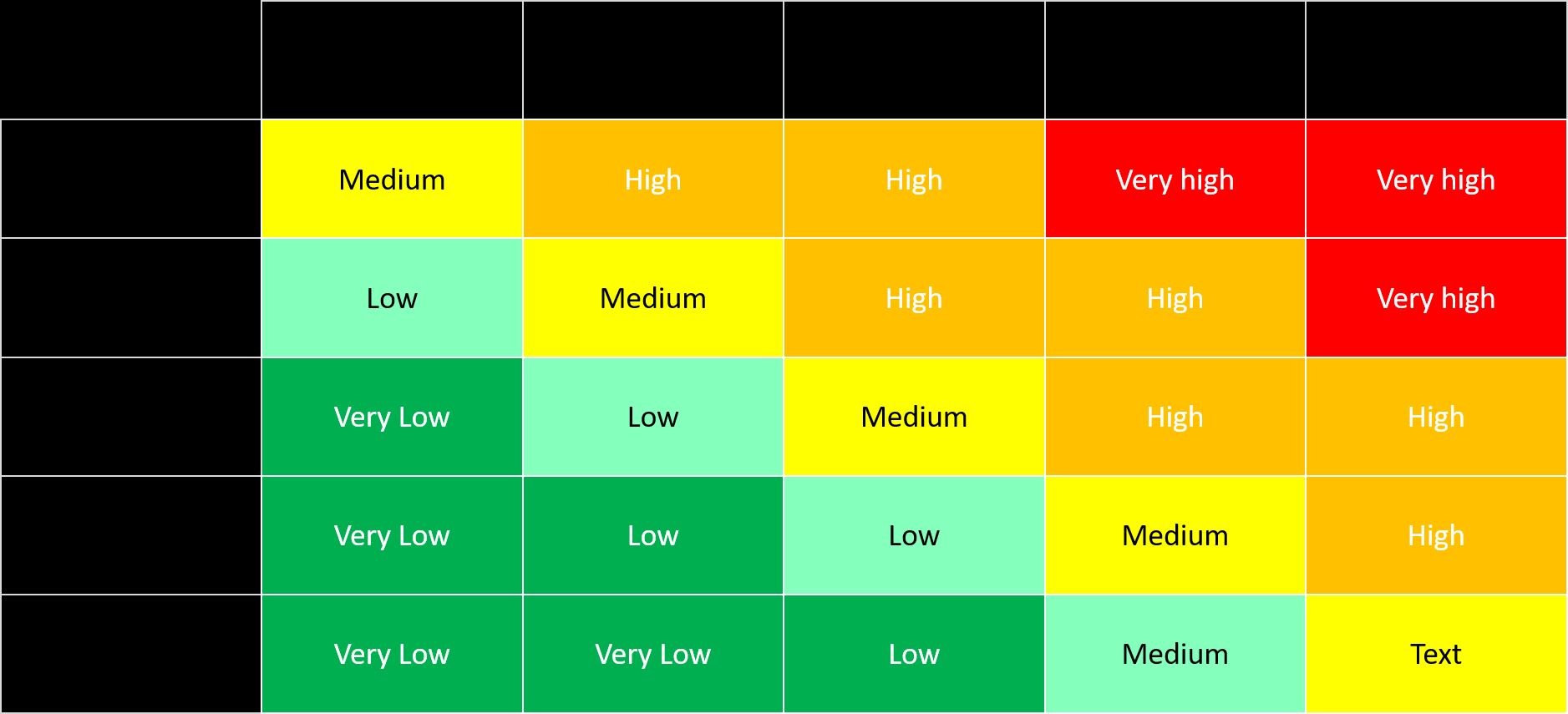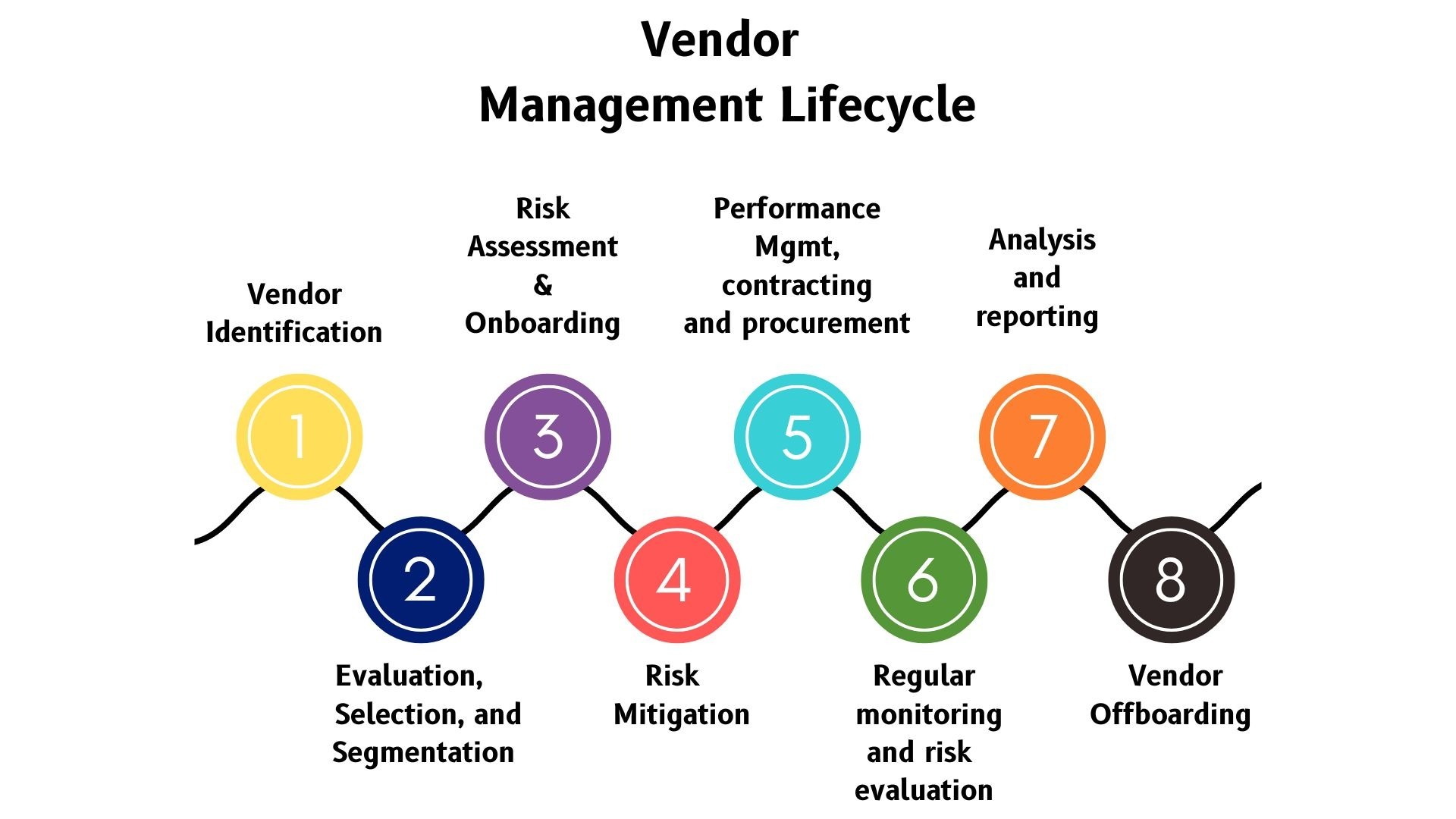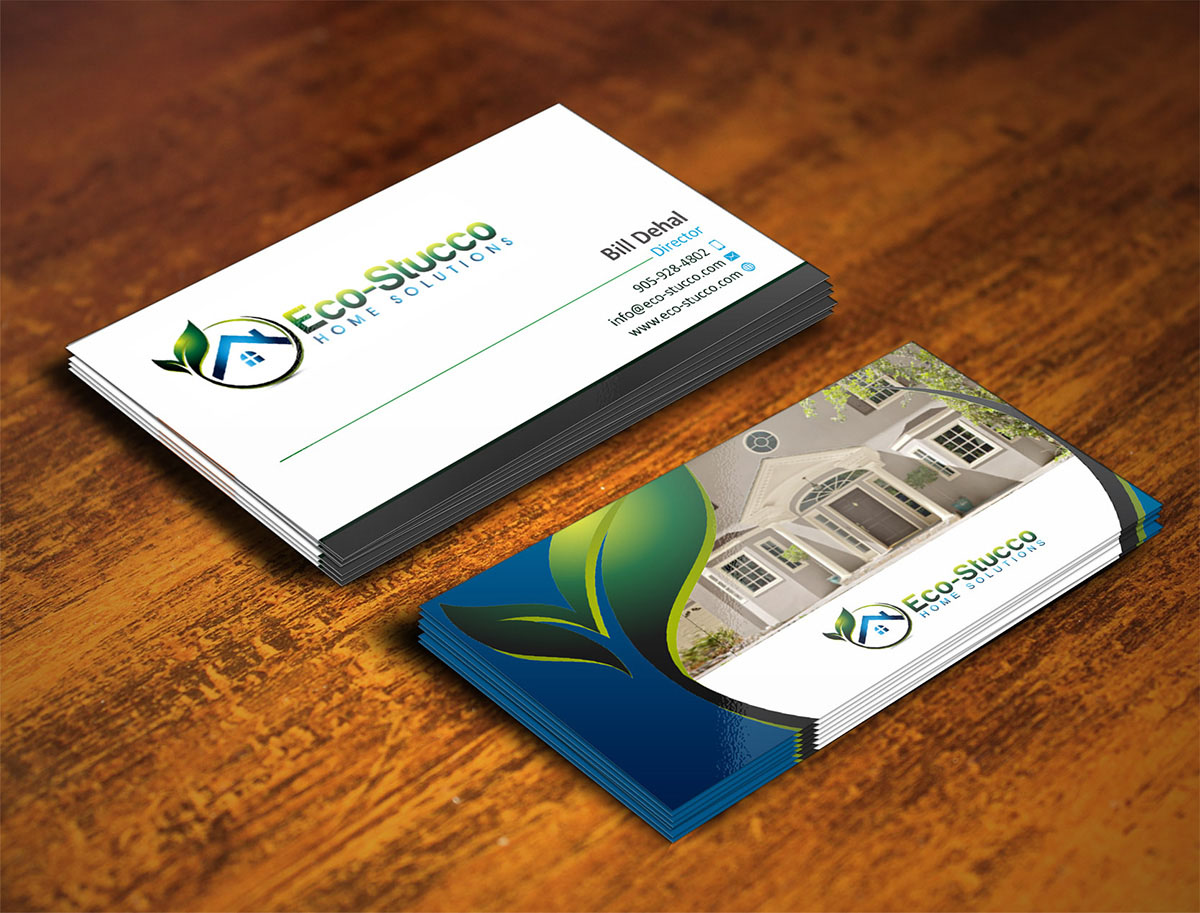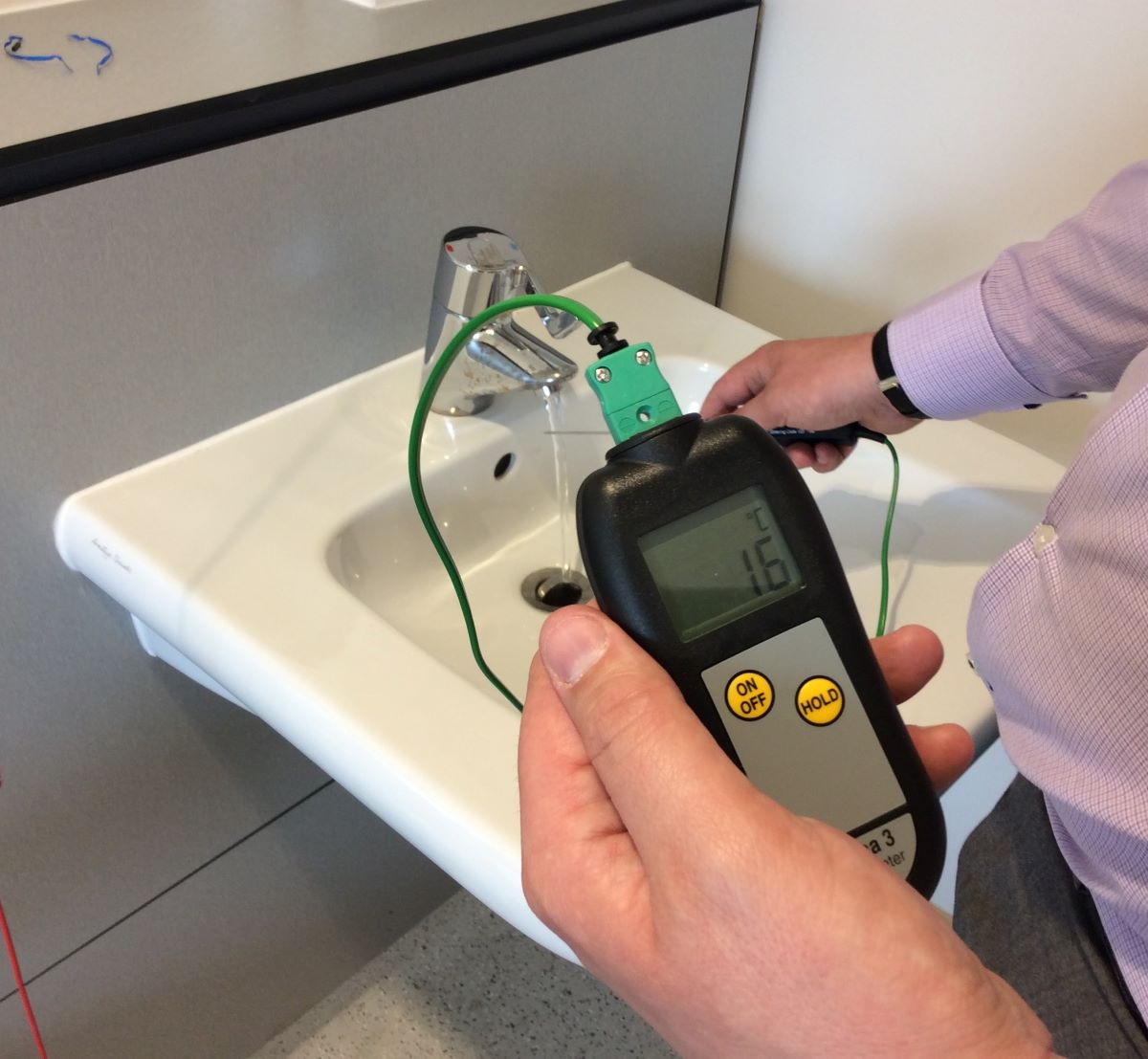

Finance
What Is A Legionella Risk Assessment
Published: January 15, 2024
Learn more about finance and the importance of conducting a Legionella risk assessment. Safeguard your business and ensure compliance with regulations.
(Many of the links in this article redirect to a specific reviewed product. Your purchase of these products through affiliate links helps to generate commission for LiveWell, at no extra cost. Learn more)
Table of Contents
- Introduction
- What is Legionella?
- Understanding Legionella Risk Assessment
- Importance of Legionella Risk Assessment
- Legal Requirements for Legionella Risk Assessment
- Steps Involved in Legionella Risk Assessment
- Preparing for a Legionella Risk Assessment
- Conducting a Legionella Risk Assessment
- Identifying Sources of Legionella Contamination
- Evaluating the Likelihood of Legionella Growth
- Assessing Control Measures in Place
- Identifying the Vulnerable Population
- Documenting and Reporting Findings
- Implementing Control and Prevention Measures
- Reviewing and Updating Legionella Risk Assessment
- Conclusion
Introduction
Welcome to the world of finance, where understanding the intricacies of money management and investment opportunities is essential for building a secure and prosperous future. As an SEO expert with deep finance knowledge, I’m here to guide you through the complex landscape of the financial realm and provide you with valuable insights into various aspects of personal and business finance.
Whether you’re a seasoned investor looking to diversify your portfolio or a beginner wanting to learn the basics of budgeting and saving, this article aims to equip you with the necessary tools and knowledge to navigate the world of finance with confidence.
From explaining key financial terms and concepts to exploring different investment strategies, we will cover a wide range of topics that can help you make informed financial decisions. In addition to providing valuable information, I will also shed light on the importance of search engine optimization (SEO) in the finance industry.
Search engine optimization plays a significant role in ensuring that your financial website or blog ranks well on search engine results pages (SERPs). By optimizing your content with relevant keywords and ensuring a user-friendly website structure, you can attract organic traffic and generate leads for your finance-based business.
As an SEO expert, I will share tips and strategies to improve your website’s visibility and ranking in search engine results. From conducting keyword research to optimizing meta tags and creating compelling content, I’ll provide you with actionable advice to boost your online presence and attract your target audience.
Additionally, I will delve into the realm of personal finance, addressing common financial challenges and offering practical solutions to help you achieve financial freedom. Whether it’s tips for budgeting, managing debt, or planning for retirement, I’ll explore various aspects of personal finance and provide you with actionable steps to achieve your financial goals.
In the realm of business finance, I will shed light on topics such as financial planning, fundraising, and cash flow management. Whether you’re a small business owner or a finance professional seeking to enhance your knowledge, the insights shared in this article will help you make informed financial decisions for your organization’s growth and success.
So, whether you’re a finance enthusiast, an entrepreneur, or someone looking to secure their financial future, this comprehensive article will offer valuable insights and strategies to navigate the intricate world of finance. Remember, building a solid foundation of financial knowledge is the first step towards achieving your economic goals and creating a secure future for yourself and your loved ones.
What is Legionella?
Legionella is a type of bacteria that can cause a severe form of pneumonia known as Legionnaires’ disease. It was first identified in 1976 when an outbreak occurred during an American Legion convention in Philadelphia, hence the name “Legionella.”
This bacteria is commonly found in freshwater environments such as lakes, rivers, and hot springs. It thrives in warm water and can multiply rapidly in environments such as hot water tanks, cooling towers, and plumbing systems. Legionella poses a significant health risk when it is inhaled in the form of contaminated water vapor or mist.
Legionnaires’ disease is a potentially life-threatening illness characterized by symptoms similar to severe pneumonia, including high fever, cough, shortness of breath, and muscle aches. The disease can be particularly dangerous for individuals with weakened immune systems, the elderly, and those with underlying health conditions.
In addition to Legionnaires’ disease, Legionella can also cause a milder respiratory illness known as Pontiac fever. Unlike Legionnaires’ disease, Pontiac fever does not affect the lungs and typically resolves on its own without treatment.
Given the potential health risks associated with Legionella, it is crucial to take proactive measures to prevent its growth and transmission. This is where Legionella risk assessment plays a vital role.
A Legionella risk assessment involves a thorough assessment of water systems to identify potential sources of Legionella contamination and evaluate control measures in place to prevent its growth and transmission. By conducting a risk assessment, businesses and facility owners can identify areas of concern and implement appropriate control measures to safeguard the health and well-being of their employees, customers, and visitors.
Legionella risk assessment is especially important in certain environments, such as healthcare facilities, hotels, leisure centers, and office buildings, where the risk of Legionella growth and transmission is higher due to the presence of large water systems and the susceptibility of the population.
In the next section, we will explore the importance of Legionella risk assessment and the legal requirements associated with it.
Understanding Legionella Risk Assessment
Legionella risk assessment is a systematic process of analyzing water systems and identifying potential sources of Legionella contamination. It involves evaluating the likelihood of Legionella growth and transmission and assessing the effectiveness of control measures in place to mitigate the risk.
The goal of a Legionella risk assessment is to ensure the health and safety of individuals who may come into contact with water systems that could harbor Legionella bacteria. By identifying areas of concern and implementing appropriate control measures, the risk of Legionnaires’ disease and other related illnesses can be significantly reduced.
During a Legionella risk assessment, a qualified assessor will review the building’s water systems, including hot and cold water tanks, showers, cooling towers, and any other potential water sources. The assessor will evaluate factors such as water temperature, water flow, and the presence of biofilms, which are conducive to the growth of Legionella bacteria.
It is essential to understand that Legionella risk assessment is not a one-time activity. It should be carried out regularly to account for changes in water systems and to ensure that control measures remain effective. Regular assessments enable businesses and facility owners to stay compliant with legal requirements and maintain a safe environment for occupants.
It is important to note that Legionella risk assessment should be conducted by a competent person who has the necessary knowledge, skills, and experience to identify potential risks and implement control measures. This could be an in-house specialist or an external consultant familiar with Legionella management.
By understanding the specific risks associated with their water systems and implementing appropriate control measures, businesses can protect the health and well-being of their employees, customers, and visitors. Additionally, conducting a Legionella risk assessment demonstrates a commitment to health and safety and can help protect against potential legal and reputational risks.
In the following sections, we will delve deeper into the importance of Legionella risk assessment and the legal requirements associated with it. We will also discuss the step-by-step process involved in conducting a Legionella risk assessment and how to implement control and prevention measures based on the findings.
Importance of Legionella Risk Assessment
A Legionella risk assessment is of utmost importance for several reasons. The primary objective is to protect the health and well-being of individuals who may come into contact with water systems that could harbor Legionella bacteria. By identifying potential sources of contamination and evaluating control measures, a risk assessment helps prevent the spread of Legionella and reduces the risk of Legionnaires’ disease.
Here are some key reasons why Legionella risk assessment is crucial:
1. Health and Safety: Legionella bacteria can cause severe respiratory illnesses, including Legionnaires’ disease, which can be fatal for individuals with weakened immune systems. By conducting a risk assessment, businesses and facility owners can take proactive measures to prevent the growth and transmission of Legionella, ensuring the health and safety of occupants.
2. Compliance with Legal Requirements: In many countries, including the United Kingdom, there are legal obligations for businesses and facility owners to carry out Legionella risk assessments. Compliance with these regulations not only helps protect public health but also ensures that organizations meet their legal responsibilities and avoid potential penalties or legal consequences.
3. Prevention of Outbreaks: Legionnaires’ disease outbreaks can have serious consequences, both from a human health perspective and for the reputation of businesses or organizations. By conducting regular risk assessments, potential sources of contamination can be identified and control measures can be implemented to prevent outbreaks, safeguarding the reputation and integrity of the business.
4. Cost Savings: Implementing effective control measures based on the findings of a Legionella risk assessment can lead to significant cost savings in the long run. By reducing the risk of Legionella growth and transmission, businesses can avoid costly remediation efforts, legal battles, and potential compensation claims resulting from outbreaks or illness.
5. Peace of Mind: Knowing that appropriate measures are in place to protect against Legionella provides peace of mind to businesses, facility owners, and occupants. It reassures employees, customers, and visitors that their health and safety are prioritized and that proactive steps are taken to mitigate potential risks.
Overall, Legionella risk assessment is essential for preserving public health, complying with legal requirements, preventing outbreaks, saving costs, and providing peace of mind. It is a proactive approach to identify and address potential risks associated with Legionella, ensuring a safe and healthy environment for all.
In the next section, we will explore the legal requirements associated with Legionella risk assessment and the steps involved in conducting a comprehensive assessment.
Legal Requirements for Legionella Risk Assessment
Legionella risk assessment is subject to legal requirements in many countries and regions around the world. These regulations aim to ensure the health and safety of individuals who may come into contact with water systems that could harbor Legionella bacteria. Understanding and complying with these legal requirements is crucial for businesses and facility owners to avoid potential penalties and legal consequences.
While specific regulations may vary between jurisdictions, there are common elements that are typically addressed in the legal requirements for Legionella risk assessment. Here are some key aspects to consider:
1. Health and Safety Legislation: Legionella risk assessment is often mandated under health and safety legislation. These regulations place a responsibility on employers, landlords, and duty holders to assess and manage the risk of Legionella in their premises. It is important to research and understand the specific health and safety legislation relevant to your industry and jurisdiction.
2. Regulatory Agencies: Regulatory agencies, such as health departments or environmental health agencies, may have specific guidelines and requirements surrounding Legionella risk assessment. These guidelines provide detailed instructions on conducting assessments, identifying potential sources of contamination, and implementing adequate control measures.
3. Duty Holder Responsibilities: The duty holder, which could be the employer or landlord, has a legal duty to ensure the health and safety of individuals in their premises. This includes identifying the risks associated with Legionella and taking appropriate measures to manage and control these risks.
4. Frequency of Assessment: Legal requirements may specify the frequency at which Legionella risk assessments should be conducted. This could range from annually to every two years, depending on factors such as the type of premises, the vulnerability of occupants, and the complexity of the water systems.
5. Competency of Assessors: Legal requirements may stipulate that Legionella risk assessments should be carried out by competent individuals. This may include individuals with specific training or qualifications in water management, Legionella control, or public health. Ensuring the competence of assessors is vital to obtaining accurate and reliable assessment reports.
6. Record-Keeping: It is essential to maintain detailed records of Legionella risk assessments, including the findings, control measures implemented, and any remedial actions taken. Legal requirements may specify the duration for which these records should be retained, typically ranging from five to ten years.
It is crucial to consult with legal professionals or regulatory agencies specific to your jurisdiction to ensure compliance with the legal requirements for Legionella risk assessment. Non-compliance can result in penalties, fines, or other legal consequences, and more importantly, it can pose a risk to public health.
In the next section, we will explore the steps involved in conducting a Legionella risk assessment to help you understand the process and requirements in more detail.
Steps Involved in Legionella Risk Assessment
Conducting a Legionella risk assessment involves a systematic approach to evaluate water systems, identify potential sources of Legionella contamination, and assess control measures in place. By following a structured process, businesses and facility owners can ensure a comprehensive assessment and mitigate the risk of Legionella transmission. Here are the key steps involved in a Legionella risk assessment:
1. Planning and Preparation: Begin by gathering necessary information about the water systems in the premises, including their design, usage, and maintenance history. Identify the scope and objectives of the assessment, determine the areas to be assessed, and establish a timeline and resource allocation for the process.
2. Site Visit and Data Collection: Conduct a thorough site visit to inspect the water systems in the premises. Take detailed notes, photographs, and measurements of key components such as water storage tanks, pipework, showers, and cooling towers. Collect samples for laboratory analysis, if required, to determine the presence of Legionella bacteria.
3. Identification of Potential Hazards: Assess the potential sources of Legionella contamination in the water systems. This includes evaluating factors such as water temperature, water flow, stagnation points, presence of biofilms, and any other conditions that could facilitate the growth and transmission of Legionella bacteria.
4. Evaluation of Control Measures: Review the existing control measures in place to manage the risk of Legionella. This includes assessing the effectiveness of measures such as temperature control, water treatment, maintenance protocols, cleaning schedules, and record-keeping practices. Identify any gaps or areas that require improvement.
5. Assessing Vulnerable Population: Consider the vulnerability of the individuals who may come into contact with the water systems. This includes assessing factors such as age, health conditions, and immunity levels that could increase the susceptibility to Legionella-related illnesses. Determine if additional control measures are needed to protect the vulnerable population.
6. Documentation and Reporting: Compile a detailed report of the findings from the assessment, including identified hazards, control measures, and recommendations. Ensure that the report is clear, concise, and accessible to relevant stakeholders. Maintain accurate documentation of the assessment, including any laboratory results, photographs, and other supporting evidence.
7. Implementation of Control Measures: Based on the findings and recommendations of the assessment, develop an action plan to implement control measures. This may include measures such as temperature adjustments, disinfection procedures, water treatment protocols, improved maintenance practices, and staff training programs. Ensure that the action plan is communicated to all relevant personnel and that responsibilities and timelines are clearly defined.
8. Monitoring and Review: Regularly monitor and review the effectiveness of the implemented control measures. This includes conducting ongoing surveillance for Legionella, maintaining accurate records, and addressing any identified issues promptly. Schedule periodic reviews of the risk assessment to account for changes in water systems, regulations, or best practices.
By following these steps, businesses and facility owners can systematically assess and manage the risk of Legionella in their water systems. Proper planning, data collection, hazard identification, control evaluation, documentation, and implementation of control measures are vital to the success of a Legionella risk assessment.
In the upcoming sections, we will dive deeper into each step to provide a more in-depth understanding of the Legionella risk assessment process and best practices.
Preparing for a Legionella Risk Assessment
Proper preparation is crucial to ensure a successful and thorough Legionella risk assessment. By taking the necessary steps to prepare, businesses and facility owners can maximize the effectiveness of the assessment process and obtain accurate and reliable results. Here are key considerations when preparing for a Legionella risk assessment:
1. Familiarize Yourself with Regulations: Research and familiarize yourself with the relevant regulations and guidelines regarding Legionella risk assessment in your jurisdiction. Understand the legal requirements, compliance obligations, and any specific industry guidelines that may apply to your premises.
2. Identify Responsible Personnel: Designate individuals within your organization who will be responsible for overseeing and coordinating the Legionella risk assessment. Ensure that they have the necessary knowledge and competence to carry out the assessment effectively.
3. Gather Documentation: Collect and review any existing documentation related to the water systems in your premises, such as building blueprints, maintenance records, water treatment logs, and previous risk assessment reports. This information will provide valuable insights into the history and condition of the water systems.
4. Compile a List of Water Systems: Create a comprehensive list of all water systems and associated components within your premises. This may include hot and cold water tanks, cooling towers, showers, faucets, and any other water outlets. Having a complete inventory will ensure that all relevant areas are assessed during the risk assessment process.
5. Gather Water System Data: Collect data about the water systems, including their design specifications, flow rates, temperature settings, and usage patterns. This information will help the assessor understand the specific characteristics of the water systems and identify potential areas of concern.
6. Review Maintenance Practices: Evaluate your current maintenance practices and protocols for water systems. Ensure that regular maintenance is being carried out, and that proper documentation is maintained. Identify any areas that may require improvement or additional attention to reduce the risk of Legionella contamination.
7. Determine Occupant Vulnerability: Assess the vulnerability of individuals who may come into contact with the water systems. Consider factors such as age, health conditions, and immunity levels that could increase the susceptibility to Legionella-related illnesses. This will help in identifying control measures that are specific to protecting vulnerable occupants.
8. Communicate with Occupants: Inform employees, residents, and other occupants about the upcoming Legionella risk assessment. Explain the purpose of the assessment, its importance, and the actions being taken to ensure their health and safety. Encourage their cooperation and provide any necessary instructions or guidelines for the assessment process.
9. Arrange Access to Water Systems: Coordinate with relevant personnel to ensure access to all water systems during the assessment. This may involve communicating with maintenance staff, facility managers, or building occupants to schedule convenient times for assessment activities. Collaborating with stakeholders will facilitate a smooth assessment process.
10. Prepare Questions and Concerns: Prepare any specific questions or concerns you may have regarding the water systems and Legionella risk assessment. This will help facilitate discussions with the assessor and ensure that all your queries are addressed during the assessment process.
By following these steps, businesses and facility owners can adequately prepare for a Legionella risk assessment. Proper preparation sets the stage for a comprehensive assessment and enables a collaborative approach between assessors and stakeholders. It ensures that essential information is readily available, facilitating a smoother assessment process and more accurate results.
In the next section, we will explore the detailed process of conducting a Legionella risk assessment, providing insights into each stage and best practices for a thorough assessment.
Conducting a Legionella Risk Assessment
Conducting a Legionella risk assessment is a critical step in identifying potential sources of Legionella contamination and evaluating control measures to mitigate the risk. By following a structured approach, businesses and facility owners can effectively assess water systems and implement appropriate measures to protect the health and safety of occupants. Here is the detailed process of conducting a Legionella risk assessment:
1. Site Inspection: Begin by conducting a comprehensive site inspection of the water systems within your premises. This involves visually observing all components, including hot water tanks, cooling towers, showers, faucets, and any other water outlets. Take note of their condition, cleanliness, and overall maintenance.
2. Testing and Sampling: Collect water samples as per guidelines and best practices. This may involve sampling from different water outlet types, such as taps, showers, and cooling towers. The samples are then sent to a laboratory for analysis to determine the presence and concentration of Legionella bacteria.
3. Reviewing Temperature Controls: Evaluate the temperature controls in place for the water systems. Measure the water temperatures at various points, including hot water storage tanks and outlets. Ensure that hot water is stored and distributed at temperatures that prevent Legionella growth (typically above 50°C/122°F).
4. Assessing Water Flow: Evaluate the water flow rate and design of the water systems. Proper water flow helps reduce the risk of stagnation, which can promote the growth of Legionella bacteria. Ensure that water outlets are regularly used to maintain a healthy flow.
5. Inspecting and Cleaning Cooling Towers: If cooling towers are present, thoroughly inspect and clean them according to manufacturer recommendations. Cooling towers can be a prime breeding ground for Legionella if not properly maintained. Maintain proper water treatment and follow a routine cleaning schedule.
6. Examining Water Quality Factors: Consider factors such as the presence of biofilms, sediments, and water hardness. Biofilms can host Legionella bacteria, while sediment and hard water can create ideal conditions for bacterial growth. Implement appropriate water treatment measures to minimize these risks.
7. Reviewing Maintenance Procedures: Evaluate the maintenance procedures and records for your water systems. Ensure that regular inspections, cleaning, and servicing are being carried out as per industry standards. Good maintenance practices prevent the accumulation of debris and ensure the efficiency of control measures.
8. Documenting Findings: Document all observations, test results, and findings from the assessment. This information forms the basis of the risk assessment report. Ensure that the documentation is accurate, complete, and organized for easy reference during the reporting and implementation stages.
9. Prioritizing Control Measures: Based on the assessment findings, prioritize control measures to reduce the risk of Legionella contamination. This may include improving temperature controls, modifying water flow, implementing or upgrading water treatment protocols, and enhancing maintenance practices.
10. Reporting and Action Plan: Prepare a detailed report that summarizes the findings of the risk assessment. Include recommendations and an action plan for addressing identified risks and implementing control measures. Clearly communicate the report to relevant stakeholders, such as management, building occupants, and maintenance teams.
11. Implementing Control Measures: Act upon the recommendations in the risk assessment report and implement the identified control measures. Ensure that responsible individuals or teams are assigned to each task, and establish a timeframe for their completion. Regularly monitor and review the effectiveness of the implemented measures.
12. Ongoing Monitoring and Review: Continuously monitor and review the water systems to identify any changes or new risks that may emerge. Maintain accurate records throughout the monitoring process. Regularly revisit the risk assessment to ensure its continued relevance and effectiveness.
By following these steps, businesses and facility owners can successfully conduct a Legionella risk assessment. It is crucial to engage a qualified and competent assessor familiar with Legionella management to ensure accurate and reliable results. A systematic approach and attention to detail will help protect the health and safety of occupants and mitigate the risk of Legionella contamination.
In the next section, we will explore the process of identifying potential sources of Legionella contamination during the risk assessment.
Identifying Sources of Legionella Contamination
During a Legionella risk assessment, one of the key objectives is to identify potential sources of Legionella contamination within the water systems. By recognizing these sources, businesses and facility owners can implement targeted control measures to prevent the growth and transmission of Legionella bacteria. Here are some common sources to consider:
1. Hot Water Systems: Hot water systems, including hot water tanks, boilers, and distribution pipes, can provide an ideal environment for Legionella growth if water temperatures are not properly controlled. Stagnation, insufficient hot water temperatures, or inconsistent water flow can contribute to the proliferation of Legionella bacteria.
2. Cooling Towers: Cooling towers, commonly found in large buildings or industrial facilities, are designed to remove excess heat from HVAC systems. If not properly maintained and cleaned, cooling towers can create aerosols or mists that contain Legionella bacteria, which can then be inhaled by individuals nearby.
3. Showers and Taps: Showers, faucets, and other water outlets that generate aerosols can pose a risk of Legionella contamination. Contaminated water droplets can be released during showering, handwashing, or other water usage activities, potentially leading to inhalation and infection.
4. Whirlpool Spas and Jacuzzis: Whirlpool spas and jacuzzis that are not properly cleaned and maintained can become breeding grounds for Legionella. The warm water, stagnant conditions, and complex plumbing systems can create an environment conducive to bacterial growth. Aerosols generated by these systems can then transmit the bacteria to individuals using the facilities.
5. Dental Units and Water Lines: Dental units, specifically the water lines and devices used during procedures, can harbor Legionella bacteria. Biofilms can develop in the tubing and other components if proper cleaning and maintenance protocols are not followed, providing a potential source of contamination for patients and dental staff.
6. Humidifiers and Mist Machines: Humidifiers and mist machines used in various settings, such as hospitals or indoor gardening, can produce aerosols that may contain Legionella bacteria if not properly maintained and cleaned. Inhalation of these aerosols can lead to the transmission of Legionella and subsequent respiratory infections.
7. Dead Legs and Dead Ends: Dead legs or dead ends in the plumbing system, such as unused outlets or incorrectly designed piping, can create areas of stagnant water. These stagnant areas provide an environment for Legionella growth, increasing the risk of contamination when water flow resumes or is disrupted.
8. Fire Sprinkler Systems: Fire sprinkler systems that utilize stored water can be a potential source of Legionella contamination if the water is not properly treated and maintained. Stagnant water in the sprinkler pipes can provide an environment for bacterial growth, posing a risk when the sprinkler system is activated.
During a Legionella risk assessment, a qualified assessor will carefully examine the water systems within your premises to identify these potential sources of contamination. Through visual inspections, water sampling, and analysis, they will assess the risk and recommend appropriate control measures to reduce the risk of Legionella transmission.
By identifying and mitigating these sources of Legionella contamination, businesses and facility owners can effectively prevent the spread of Legionella bacteria and reduce the risk of Legionnaires’ disease and other related illnesses.
In the next section, we will explore the process of evaluating the likelihood of Legionella growth and transmission during the risk assessment.
Evaluating the Likelihood of Legionella Growth
During a Legionella risk assessment, it is crucial to evaluate the likelihood of Legionella growth and transmission within the water systems. This assessment helps identify areas where the conditions are favorable for the bacteria to thrive, allowing businesses and facility owners to implement appropriate control measures. Here are some key factors to consider when evaluating the likelihood of Legionella growth:
1. Water Temperature: Legionella bacteria thrive in temperatures ranging from 20°C to 45°C (68°F to 113°F). Assess the temperature of the water systems, including hot water tanks, distribution pipes, and other components. Ensure that the water temperature is appropriately controlled and reaches temperatures that discourage bacterial growth.
2. Water Stagnation: Stagnant water can create an ideal environment for Legionella growth. Assess areas of the water systems where water flow is limited or where water remains stagnant for extended periods. This includes unused outlets, dead legs, or dead ends in the plumbing system. Identify any areas that require modification or regular flushing to prevent stagnation.
3. Biofilm Presence: Legionella bacteria can colonize and thrive within biofilms, which are slimy layers that can develop on the inside surfaces of pipes or other water system components. Assess the presence of biofilms during the risk assessment and identify areas where they may be present. Implement strategies to control and remove biofilms, such as appropriate water treatment and cleaning protocols.
4. Nutrient Availability: Legionella bacteria require nutrients to grow and multiply. Assess the availability of nutrients, such as organic matter or sediment, within the water systems. Excess nutrients can contribute to bacterial growth and increase the risk of Legionella contamination. Implement strategies to minimize nutrient availability through proper water treatment and filtration methods.
5. pH and Water Chemistry: Legionella growth is influenced by the pH level and overall chemistry of the water. Assess the pH levels and other chemical parameters of the water systems. Maintain appropriate pH levels and water chemistry to create an environment less favorable for Legionella growth.
6. Downtime or Standby Periods: Assess any periods of water system downtime or standby, such as during holidays or facility closures. These periods can contribute to bacterial growth if proper measures are not taken. Implement procedures to flush and disinfect the water systems before they are put back into regular use.
7. Overall System Design and Condition: Evaluate the design and condition of the water systems as a whole. Assess the complexity, efficiency, and maintenance of the systems. Properly designed and maintained systems reduce the risk of Legionella growth and transmission.
By evaluating these factors, businesses and facility owners can gauge the likelihood of Legionella growth within their water systems. The information obtained during this assessment allows for the identification of areas requiring specific control measures and interventions.
It is important to engage a qualified assessor who has the necessary expertise and knowledge of Legionella management to accurately evaluate the likelihood of Legionella growth. Their insights and recommendations will help ensure effective implementation of control measures and reduce the risk of Legionella transmission.
In the next section, we will delve into the assessment of control measures already in place to manage the risk of Legionella.
Assessing Control Measures in Place
As part of a Legionella risk assessment, it is crucial to assess the control measures that are already in place to manage the risk of Legionella within the water systems. This evaluation helps determine the effectiveness of the existing measures and identify any gaps or areas for improvement. Here are key aspects to consider when assessing control measures:
1. Water Temperature Control: Evaluate the effectiveness of temperature control measures in managing Legionella growth. Ensure that hot water temperatures are maintained above 50°C (122°F) to discourage bacterial growth, and cold water is kept below 20°C (68°F) to minimize the risk of Legionella proliferation.
2. Water Management Systems: Review the water management systems in place, such as the use of recirculating systems, thermostatic mixing valves, or point-of-use filters. Assess if these systems are functioning correctly and providing adequate protection against Legionella contamination.
3. Water Treatment Protocols: Evaluate the water treatment protocols utilized for the prevention of Legionella growth. This may include the use of biocides, disinfectants, or other water treatment methods. Assess if these treatments are being administered correctly and at appropriate intervals.
4. Plumbing System Design and Maintenance: Assess the design and maintenance of the plumbing system. Evaluate whether the system is constructed to prevent stagnation, dead legs, or dead ends where Legionella can thrive. Review the maintenance practices to ensure regular cleaning, flushing, and maintenance of the system.
5. Monitoring and Testing Programs: Evaluate the monitoring and testing programs in place to track Legionella levels and verify the effectiveness of control measures. Assess if routine water sampling and testing are conducted, and whether the results are appropriately documented and analyzed.
6. Staff Training and Awareness: Assess the level of staff training and awareness regarding Legionella management. Evaluate if employees are knowledgeable about the risks of Legionella and the importance of adhering to control measures. Identify areas where additional training or communication may be required.
7. Record-Keeping Practices: Review the record-keeping practices related to Legionella control measures. Assess if comprehensive records are maintained, including maintenance logs, temperature records, water treatment records, and any identified corrective actions or issues. Ensure that records are easily accessible and well-organized.
8. Communication with Relevant Parties: Evaluate the communication practices between stakeholders, including management, maintenance staff, and occupants of the premises. Assess if there is clear communication regarding Legionella risk, control measures, and responsibilities. Ensure that proper channels are established to promptly address any issues or concerns related to Legionella management.
By assessing control measures already in place, businesses and facility owners can identify strengths and weaknesses in their Legionella management strategies. This evaluation provides an opportunity to update or refine existing measures, implement corrective actions, and enhance the overall effectiveness of Legionella control efforts.
During the risk assessment, it is advisable to collaborate with qualified assessors or consultants with expertise in Legionella management. Their knowledge and experience will provide valuable insights into assessing control measures and implementing viable solutions to reduce the risk of Legionella transmission.
In the following section, we will explore the importance of identifying the vulnerable population during a Legionella risk assessment.
Identifying the Vulnerable Population
During a Legionella risk assessment, it is crucial to identify the vulnerable population who may be at a higher risk of contracting Legionnaires’ disease or other related illnesses. These individuals may have compromised immune systems, pre-existing health conditions, or other factors that make them more susceptible to severe infections. By identifying the vulnerable population, businesses and facility owners can implement targeted measures to protect their health and well-being. Here are key aspects to consider when identifying the vulnerable population:
1. Age: The age of individuals can play a role in their vulnerability to Legionella-related illnesses. The elderly, especially those above 65 years old, are more susceptible to severe infections due to age-related decline in immune function. Additionally, infants and young children may also be vulnerable to infections.
2. Immune System Compromisation: Individuals with weakened immune systems are more susceptible to Legionella infections. This includes those undergoing immunosuppressive treatments, individuals with autoimmune diseases, and those with HIV/AIDS. Furthermore, individuals on certain medications, such as corticosteroids or chemotherapy, may have compromised immune systems.
3. Underlying Health Conditions: Certain underlying health conditions can increase the susceptibility to Legionella-related illnesses. Individuals with respiratory diseases, such as chronic obstructive pulmonary disease (COPD) or asthma, have a higher risk. Those with cardiovascular diseases, diabetes, or kidney diseases may also be more vulnerable to severe infections.
4. Occupational Exposure: Some occupations may involve working in environments where Legionella exposure is more likely. Healthcare workers, specifically those working in high-risk areas such as respiratory units or water systems maintenance, may be at an increased risk. Similarly, workers in construction, plumbing, or cooling tower maintenance may also face higher exposure levels.
5. Community Settings: Certain community settings may have a higher population vulnerability due to close proximity and shared water systems. This includes residential care facilities, nursing homes, hospitals, and rehabilitation centers. These settings often have a higher concentration of individuals who are elderly or have underlying health conditions.
6. Travel History: Individuals with a recent travel history, especially to areas with known Legionella outbreaks, may have an increased risk of exposure. Travel destinations with warm climates and high-density populations may have a higher prevalence of Legionella-contaminated water systems, such as hotels or tropical resorts.
7. Smoking: Smokers, particularly heavy smokers or those with long-term smoking history, may have an increased vulnerability to Legionella infections. Smoking damages the respiratory system’s natural defenses and weakens the immune system, making them more susceptible to respiratory infections.
8. Pre-existing Legionella-related Illness: Individuals who have previously experienced Legionnaires’ disease or Pontiac fever may be at a higher risk of reinfection or complications. Their immune systems may be more responsive to subsequent exposures, increasing their vulnerability to severe infections.
By identifying the vulnerable population, businesses and facility owners can tailor their Legionella control measures to provide extra protection and prioritize the health and safety of these individuals. This may involve implementing additional control measures, such as enhanced water treatment, more frequent monitoring, targeted education and training programs, or specific hygiene protocols.
It is important to collaborate with qualified assessors or consultants with expertise in Legionella risk assessment to accurately identify the vulnerable population. Their knowledge and experience will help ensure appropriate and effective measures are implemented to mitigate the risks for this group.
In the following section, we will explore the documentation and reporting phase of a Legionella risk assessment.
Documenting and Reporting Findings
Documenting and reporting the findings of a Legionella risk assessment is a crucial step in the assessment process. It involves compiling all relevant information, observations, and recommendations into a comprehensive and detailed report. This documentation serves as a reference for stakeholders and forms the basis for implementing control measures. Here’s what to consider when documenting and reporting the findings:
1. Comprehensive Assessment Report: Compile a thorough report that encompasses all aspects of the Legionella risk assessment. Include information about the site, details of water systems, assessment methodology, and the scope of the assessment. Provide a clear overview of the findings and recommendations for control measures.
2. Summary of Assessment: Begin the report with an executive summary summarizing the purpose of the assessment, key findings, and recommendations. This summary should be concise and provide a high-level understanding of the risk assessment and its outcomes.
3. Findings and Observations: Document all observations made during the assessment, including the condition of water systems, temperature control measures, and any identified potential sources of Legionella contamination. Clearly articulate any areas of concern or deficiencies that may pose a risk to the health and safety of occupants.
4. Laboratory Analysis Results: If water sampling and analysis were conducted, include the results and interpretations within the report. Provide a summary of Legionella bacteria levels and compare them to the relevant guidelines or thresholds. Interpret the significance of the results in relation to the risk assessment findings.
5. Risk Assessment Matrix: Create a risk assessment matrix or table that categorizes the identified hazards and control measures. This matrix helps stakeholders understand the severity of the risks and the effectiveness of the existing control measures in place. Use a clear and intuitive visual format to present this information.
6. Recommendations and Action Plan: Outline clear and actionable recommendations based on the identified risks and their severity. Provide a prioritized action plan that highlights the measures to be taken, responsible parties, and timelines for implementation. Ensure that the recommendations are specific, measurable, achievable, relevant, and time-bound (SMART).
7. Compliance with Legal Requirements: Highlight the compliance status of the premises with relevant regulations and legal obligations. Discuss any gaps or areas that require attention to ensure full compliance. Include relevant references to specific legal requirements or standards for clarity.
8. Supporting Documentation: Attach supporting documentation, including photographs, test results, maintenance records, and any other relevant evidence that strengthens the findings and recommendations. This documentation adds credibility and transparency to the report.
9. Clear and Accessible Language: Use clear, concise, and accessible language in the report to ensure that it can be easily understood by all stakeholders. Avoid technical jargon or terminology that may be unfamiliar to non-experts. If technical terms are necessary, provide clear explanations and definitions.
10. Distribution and Communication: Effectively distribute the report to all relevant stakeholders, such as management, maintenance teams, and building occupants. Ensure that there is a clear communication plan to convey the findings, recommendations, and any required actions. Encourage feedback and provide channels for addressing questions or concerns.
By documenting and reporting the findings of a Legionella risk assessment, businesses and facility owners can effectively communicate the risks and necessary control measures. The report serves as a valuable reference and guide for implementing comprehensive measures to mitigate Legionella contamination and protect the health and well-being of occupants.
In the next section, we will explore the process of implementing control and prevention measures based on the findings of a Legionella risk assessment.
Implementing Control and Prevention Measures
Implementing control and prevention measures is a crucial step following a Legionella risk assessment. Based on the findings and recommendations outlined in the assessment report, businesses and facility owners can take targeted actions to mitigate the risk of Legionella contamination within their water systems. Here’s what to consider when implementing control and prevention measures:
1. Prioritize Recommendations: Review the recommendations provided in the assessment report and prioritize them based on their severity and potential impact on Legionella control. Focus on addressing high-priority measures first to minimize risks and ensure effective control.
2. Develop an Action Plan: Create a detailed action plan that outlines the specific measures to be implemented, responsibilities assigned to relevant personnel, and a timeline for completion. Ensure that the action plan is clear, actionable, and achievable within the given timeframe.
3. Improve Temperature Control: Implement measures to improve temperature control within the water systems. This may involve adjusting hot water temperatures to ensure they exceed 50°C (122°F) and cold water temperatures are below 20°C (68°F). Regularly monitor and record water temperatures to verify compliance.
4. Enhance Water Treatment: Strengthen water treatment protocols to minimize the risk of Legionella growth. This may involve optimizing the selection and use of appropriate biocides or disinfectants, implementing filtration systems, and utilizing water treatment technologies that target Legionella bacteria specifically.
5. Improve System Flushing and Maintenance: Enhance flushing and maintenance procedures to prevent stagnation and remove potential biofilm buildup. Regularly flush water systems, pay special attention to dead legs or dead ends in the plumbing, and ensure that maintenance protocols follow industry best practices.
6. Implement Monitoring Programs: Establish routine monitoring programs to track Legionella levels within the water systems. Regularly sample and test water for Legionella bacteria, ensuring that proper sampling techniques and laboratory analysis are employed. Use the monitoring results to assess the effectiveness of control measures and make adjustments if necessary.
7. Staff Training and Education: Train staff and raise awareness about Legionella risks, control measures, and best practices. Ensure that employees, maintenance staff, and other relevant personnel have a clear understanding of their roles and responsibilities in maintaining the integrity of water systems and preventing Legionella contamination.
8. Enhance Record-Keeping: Establish robust record-keeping practices to maintain detailed documentation of maintenance activities, temperature records, water treatment logs, monitoring results, and any corrective actions taken. These records provide vital evidence of compliance and assist in tracking the efficacy of control measures over time.
9. Promote Communication and Collaboration: Foster a culture of communication and collaboration among stakeholders involved in Legionella control. Develop channels for the exchange of information, feedback, and concerns related to Legionella management. Encourage an open dialogue to address issues promptly and ensure a coordinated effort towards prevention and control.
10. Regularly Review and Update Measures: Continuously monitor and review the effectiveness of implemented control measures. Stay updated with new research, guidelines, and industry best practices related to Legionella management. Regularly revisit the risk assessment process to account for changes in water systems, regulations, or emerging risks.
By implementing these control and prevention measures, businesses and facility owners can significantly reduce the risk of Legionella contamination within their water systems. Proactive measures and ongoing monitoring will help maintain a safe and healthy environment for building occupants and ensure compliance with legal requirements.
In the next section, we will explore the importance of regularly reviewing and updating the Legionella risk assessment to maintain comprehensive prevention and control practices.
Reviewing and Updating Legionella Risk Assessment
Regularly reviewing and updating the Legionella risk assessment is vital for maintaining effective prevention and control practices. The risk of Legionella contamination can change over time due to various factors, such as changes in water systems, regulations, or knowledge about Legionella management. Here’s why reviewing and updating the risk assessment is important:
1. Identify Changes in Water Systems: Over time, water systems may undergo modifications or renovations that can affect the risk of Legionella contamination. The review process allows for identifying any changes in the water systems, such as new installations, modifications to existing systems, or updates in plumbing infrastructure.
2. Incorporate Emerging Knowledge and Best Practices: The field of Legionella management is continuously evolving. New research, guidelines, and best practices emerge as more information becomes available. Reviewing the risk assessment enables the incorporation of updated knowledge to ensure that control measures are aligned with the latest standards and recommendations.
3. Stay Compliant with Regulations: Regulations and legal requirements related to Legionella management may change over time. Regularly reviewing the risk assessment ensures that control measures remain compliant with current regulations, mitigating the risk of potential penalties or legal consequences.
4. Assess the Effectiveness of Control Measures: Ongoing monitoring and evaluation of control measures are essential to determine their effectiveness in preventing Legionella contamination. By reviewing the risk assessment, businesses and facility owners can assess if the implemented measures are achieving the desired outcomes and make adjustments as necessary.
5. Address Identified Gaps and Deficiencies: The review process helps identify any gaps or deficiencies in the existing control measures. By addressing these issues, businesses can strengthen their Legionella prevention strategies and minimize the risk of contamination. This may involve improving maintenance protocols, adjusting temperature control measures, or enhancing water treatment procedures.
6. Adapt to Changing Circumstances: Environmental factors, population changes, or other external circumstances may necessitate updates to Legionella prevention and control measures. Regularly reviewing the risk assessment allows for the adaptation of strategies to align with the current context, ensuring effective measures are in place.
7. Maintain Documentation and Records: The review process provides an opportunity to ensure that all necessary documentation and records related to Legionella management are up to date. This includes maintaining records of maintenance activities, monitoring results, training programs, and any corrective actions undertaken.
8. Renew Stakeholder Engagement: Regularly reviewing the risk assessment provides an opportunity to renew stakeholder engagement in Legionella management. This involves communicating updates, conducting training sessions, and fostering collaboration among management, staff, and occupants to maintain a shared commitment to Legionella prevention and control.
By regularly reviewing and updating the Legionella risk assessment, businesses and facility owners can ensure that control measures remain effective and aligned with the current understanding of Legionella management. This proactive approach supports the ongoing prevention and control of Legionella contamination, safeguarding the health and well-being of building occupants.
In the final section, we will conclude our comprehensive article on Legionella risk assessment and its importance in maintaining a safe water environment.
Conclusion
In conclusion, Legionella risk assessment is a critical process for businesses and facility owners to protect the health and well-being of individuals who may come into contact with water systems. Conducting a thorough assessment allows for the identification of potential sources of Legionella contamination, evaluation of control measures in place, and the implementation of targeted actions to prevent the spread of Legionella bacteria.
Legionella risk assessment is essential for several reasons. It ensures compliance with legal requirements, reduces the risk of Legionella-related illnesses, and protects both occupants and the reputation of businesses or organizations. By regularly reviewing and updating the risk assessment, industry best practices, emerging knowledge, and changes in water systems can be incorporated to maintain effective prevention and control measures.
Throughout the risk assessment process, it is crucial to engage qualified assessors or consultants with expertise in Legionella management to ensure accurate evaluation and reliable recommendations. Collaboration and communication among stakeholders, including management, maintenance staff, and occupants, play a crucial role in implementing control measures and fostering a culture of Legionella awareness.
Implementing control and prevention measures, such as temperature control, water treatment, and regular monitoring, is essential to minimize the risk of Legionella contamination. Additionally, identifying vulnerable populations and prioritizing their protection enhances the overall effectiveness of Legionella risk management.
Documentation and reporting of the risk assessment findings provide a valuable record of the assessment process, observations, and recommendations. Clear and accessible reports enable effective communication to stakeholders, ensuring understanding and support for the proposed control measures.
Regular review and updating of the risk assessment process are integral to maintain comprehensive prevention and control practices. By staying abreast of changes in regulations, emerging knowledge, and water system conditions, businesses and facility owners can continually adapt their strategies to mitigate the risk of Legionella contamination.
Overall, Legionella risk assessment is a proactive approach to safeguarding the health and safety of individuals who may come into contact with water systems. By understanding the risks, implementing appropriate control measures, and staying vigilant through regular assessments, businesses and facility owners can create a water environment that is safe, compliant with regulations, and conducive to the wellbeing of occupants.
